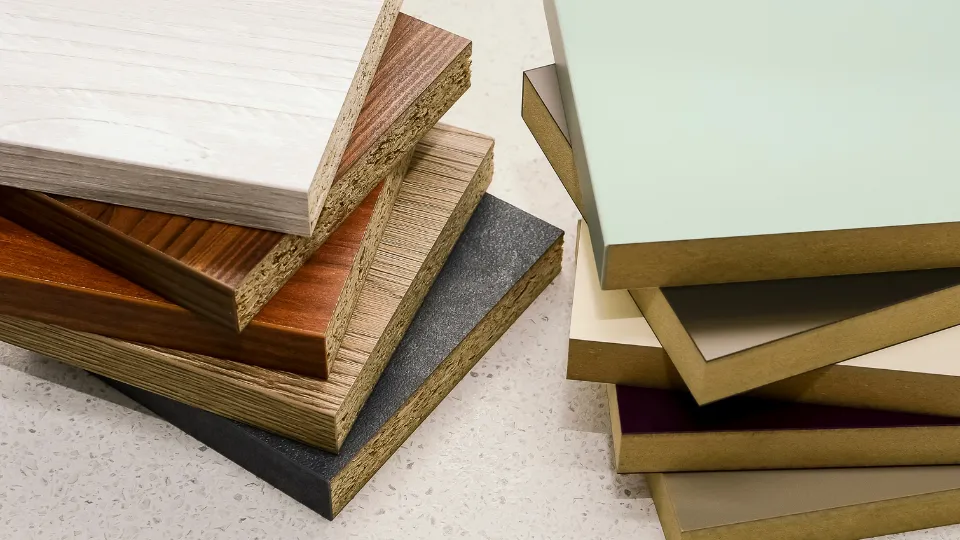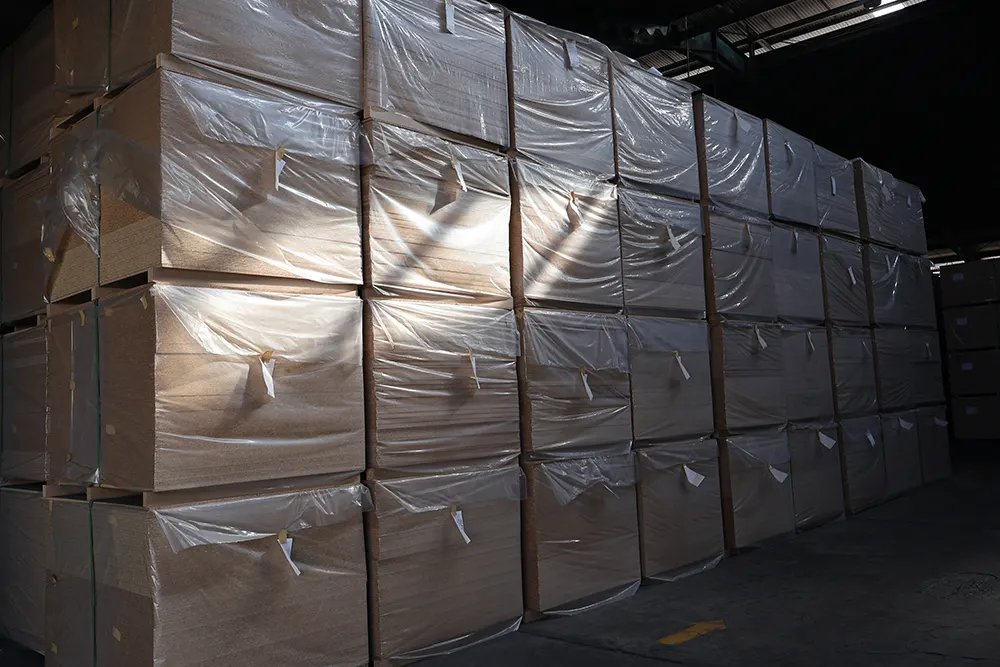Particle Board vs MDF vs Plywood are three commonly used materials in the construction industry. While they may seem similar at first glance, each material has its own unique characteristics and applications. In this article, we will explore the differences between particle board, MDF, and plywood to help you make an informed decision.

Particle Board
Particle board, also known as chipboard, is made from wood particles that are bonded together with a synthetic resin adhesive under high pressure and temperature. It is an affordable and versatile material that is commonly used in furniture and cabinetry construction.
One of the main advantages of particle board is its cost-effectiveness. It is generally less expensive than MDF and plywood, making it a popular choice for budget-conscious projects. However, it is important to note that particle board is not as durable or strong as MDF or plywood.
Particle board has a smooth and consistent surface, which makes it ideal for applications where appearance is not a primary concern. It is commonly used for shelves, cabinet interiors, and low-impact furniture pieces. However, it is not recommended for areas with high moisture or humidity, as it is prone to swelling and warping when exposed to moisture.
MDF (Medium Density Fiberboard)
MDF, or Medium Density Fiberboard, is a type of engineered wood product that is made by breaking down hardwood or softwood residuals into wood fibers. These fibers are then combined with wax and a resin binder to form panels under high temperature and pressure.
One of the main advantages of MDF is its versatility. It can be easily shaped and machined, making it suitable for intricate designs and detailed woodworking projects. MDF has a smooth and uniform surface, which makes it an excellent choice for painting and finishing. It also has a high screw-holding capacity, making it a popular choice for furniture assembly.
Unlike particle board, MDF has a higher density and is more durable. It is less prone to warping and has better moisture resistance, making it suitable for areas with higher humidity levels. However, it is important to note that MDF is still susceptible to moisture damage and should be properly sealed or protected in wet environments.
MDF is commonly used for furniture, cabinetry, shelving, and decorative moldings. Its versatility and affordability make it a popular choice among both professional woodworkers and DIY enthusiasts.
Plywood
Plywood is a type of engineered wood product that is made by gluing together several thin layers of wood veneers. These veneers are stacked in alternating directions, which gives plywood its strength and stability. The number of layers and the quality of the veneers determine the strength and durability of the plywood.
One of the main advantages of plywood is its strength and structural integrity. It is stronger than both particle board and MDF, making it suitable for applications that require load-bearing capabilities. Plywood is commonly used in construction, flooring, roofing, and other structural applications.
Plywood also has good moisture resistance, especially when compared to particle board and MDF. However, it is important to note that plywood is still susceptible to moisture damage and should be properly sealed or protected in wet environments.
Another advantage of plywood is its natural beauty. The layers of wood veneers give plywood a unique and attractive grain pattern, making it a popular choice for visible surfaces such as furniture, cabinetry, and decorative panels.
Conclusion Particle Board vs MDF vs Plywood
In summary, particle board, MDF, and plywood are three commonly used materials in the construction industry. Particle board is affordable but less durable, while MDF offers versatility and better moisture resistance. Plywood, on the other hand, is known for its strength and natural beauty. The choice between these materials depends on the specific requirements of your project, such as cost, durability, and appearance. By understanding the differences between particle board, MDF, and plywood, you can make an informed decision and choose the right material for your needs.


